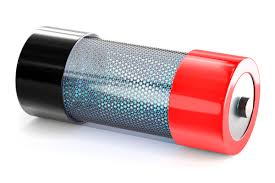
Breaking News
 How a 27-Year-Old Codebreaker Busted the Myth of Bitcoin's Anonymity
How a 27-Year-Old Codebreaker Busted the Myth of Bitcoin's Anonymity
 Old World Order is COLLAPSING: The Death of Europe and the Rise of China
Old World Order is COLLAPSING: The Death of Europe and the Rise of China
 Energy Secretary Expects Fusion to Power the World in 8-15 Years
Energy Secretary Expects Fusion to Power the World in 8-15 Years
 South Koreans Feel Betrayed Over Immigration Raid, Now Comes the Blowback
South Koreans Feel Betrayed Over Immigration Raid, Now Comes the Blowback
Top Tech News
 Tesla Megapack Keynote LIVE - TESLA is Making Transformers !!
Tesla Megapack Keynote LIVE - TESLA is Making Transformers !!
 Methylene chloride (CH2Cl?) and acetone (C?H?O) create a powerful paint remover...
Methylene chloride (CH2Cl?) and acetone (C?H?O) create a powerful paint remover...
 Engineer Builds His Own X-Ray After Hospital Charges Him $69K
Engineer Builds His Own X-Ray After Hospital Charges Him $69K
 Researchers create 2D nanomaterials with up to nine metals for extreme conditions
Researchers create 2D nanomaterials with up to nine metals for extreme conditions
 The Evolution of Electric Motors: From Bulky to Lightweight, Efficient Powerhouses
The Evolution of Electric Motors: From Bulky to Lightweight, Efficient Powerhouses
 3D-Printing 'Glue Gun' Can Repair Bone Fractures During Surgery Filling-in the Gaps Around..
3D-Printing 'Glue Gun' Can Repair Bone Fractures During Surgery Filling-in the Gaps Around..
 Kevlar-like EV battery material dissolves after use to recycle itself
Kevlar-like EV battery material dissolves after use to recycle itself
 Laser connects plane and satellite in breakthrough air-to-space link
Laser connects plane and satellite in breakthrough air-to-space link
 Lucid Motors' World-Leading Electric Powertrain Breakdown with Emad Dlala and Eric Bach
Lucid Motors' World-Leading Electric Powertrain Breakdown with Emad Dlala and Eric Bach
 Murder, UFOs & Antigravity Tech -- What's Really Happening at Huntsville, Alabama's Space Po
Murder, UFOs & Antigravity Tech -- What's Really Happening at Huntsville, Alabama's Space Po
Dash of graphene leads to "toughest" solid battery electrolyte to date

Scientists at Brown University are reporting a new design that overcomes some of the key hurdles, using a delicate mix of ceramics and the wonder material graphene to produce the toughest solid electrolyte to date.
As the solution that carries the lithium ions back and forth between the anode and cathode while the battery is charged and discharged, liquid electrolytes play an important role in the function of today's lithium-ion batteries. But these highly volatile liquids bring a risk of fire when the battery short circuits, so there is room for improvement in terms of safety.
Beyond that, alternative electrolytes could offer greater energy density and even allow for other components of the battery to be upgraded, too. For example, the anode is typically made out of copper and graphite, but scientists believe a solid electrolyte would enable the battery to function with a pure lithium anode, something that could break the "energy-density bottleneck," according to one recently published study.



